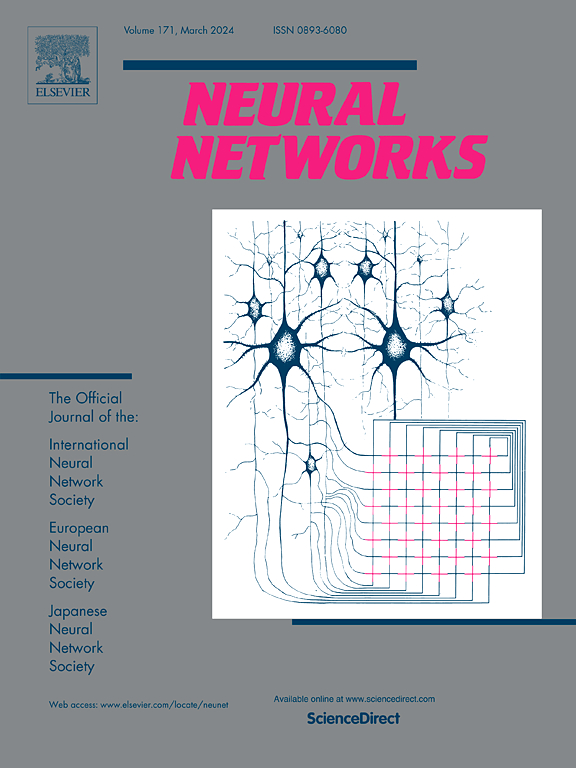I2HGNN: Iterative Interpretable HyperGraph Neural Network for semi-supervised classification
IF 6
1区 计算机科学
Q1 COMPUTER SCIENCE, ARTIFICIAL INTELLIGENCE
引用次数: 0
Abstract
Learning on hypergraphs has garnered significant attention recently due to their ability to effectively represent complex higher-order interactions among multiple entities compared to conventional graphs. Nevertheless, the majority of existing methods are direct extensions of graph neural networks, and they exhibit noteworthy limitations. Specifically, most of these approaches primarily rely on either the Laplacian matrix with information distortion or heuristic message passing techniques. The former tends to escalate algorithmic complexity, while the latter lacks a solid theoretical foundation. To address these limitations, we propose a novel hypergraph neural network named I2HGNN, which is grounded in an energy minimization function formulated for hypergraphs. Our analysis reveals that propagation layers align well with the message-passing paradigm in the context of hypergraphs. I2HGNN achieves a favorable trade-off between performance and interpretability. Furthermore, it effectively balances the significance of node features and hypergraph topology across a diverse range of datasets. We conducted extensive experiments on 15 datasets, and the results highlight the superior performance of I2HGNN in the task of hypergraph node classification across nearly all benchmarking datasets.
半监督分类的迭代可解释超图神经网络。
由于与传统图相比,超图能够有效地表示多个实体之间复杂的高阶交互,因此最近在超图上的学习引起了极大的关注。然而,现有的大多数方法都是图神经网络的直接扩展,它们表现出明显的局限性。具体来说,这些方法中的大多数主要依赖于带有信息失真的拉普拉斯矩阵或启发式消息传递技术。前者往往会增加算法的复杂度,而后者缺乏坚实的理论基础。为了解决这些限制,我们提出了一种名为I2HGNN的新型超图神经网络,该网络基于为超图制定的能量最小化函数。我们的分析表明,传播层与超图上下文中的消息传递范式很好地结合在一起。I2HGNN在性能和可解释性之间实现了良好的平衡。此外,它有效地平衡了节点特征和超图拓扑在不同数据集上的重要性。我们在15个数据集上进行了大量的实验,结果突出了I2HGNN在几乎所有基准数据集的超图节点分类任务中的优越性能。
本文章由计算机程序翻译,如有差异,请以英文原文为准。
求助全文
约1分钟内获得全文
求助全文
来源期刊

Neural Networks
工程技术-计算机:人工智能
CiteScore
13.90
自引率
7.70%
发文量
425
审稿时长
67 days
期刊介绍:
Neural Networks is a platform that aims to foster an international community of scholars and practitioners interested in neural networks, deep learning, and other approaches to artificial intelligence and machine learning. Our journal invites submissions covering various aspects of neural networks research, from computational neuroscience and cognitive modeling to mathematical analyses and engineering applications. By providing a forum for interdisciplinary discussions between biology and technology, we aim to encourage the development of biologically-inspired artificial intelligence.
 求助内容:
求助内容: 应助结果提醒方式:
应助结果提醒方式:


